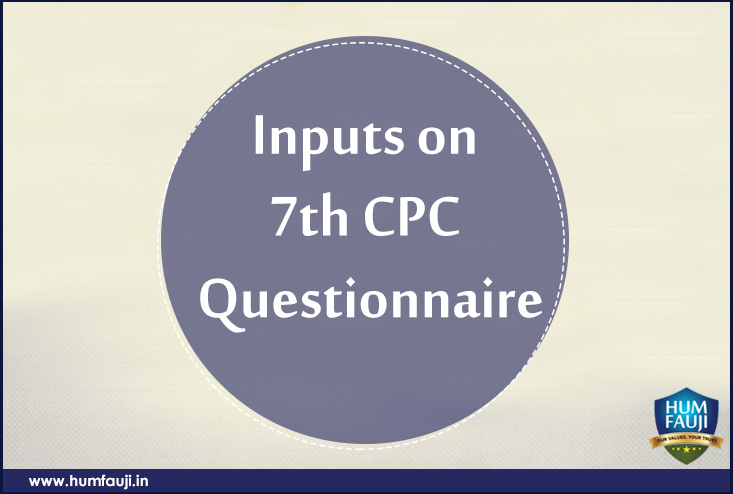1) What are 5 things you advice government officials should do with increased pay and arrears once the pay hikes come?
- The 7th Pay Commission money will come to the Government officials in two forms– approximately seven months’ pay arrears and the monthly increased money.
Unlike the earlier pay commissions which took a long time to finalise their recommendations (6th CPC took 30 months), this one has done it pretty fast, implying that there is likely to be just about seven months of arrears that become due. Hence, the arrears are going to be quite small, just about equal to a month’s salary post-tax. For this reason, there is neither much excitement about the arrears nor could there be great plans required to be made to spend it. However, since it will become available anyway, the best way to utilise it is to retire debt, if any. This implies that one should try to reduce the loans taken – costlier loans first. A logical order to pay off the loans should be Personal loans, product loans (taken for vehicles, durables, jewellery etc), loan against property, and lastly home loans. It not only reduces the interest payment, but there is a big psychological relief too when a loan is paid off, however small. After the loans have been paid off, if some money is left, a contingency fund, typically equal to about three months’ expenses (including all loan payments) should be created or topped up, as the case be. Any further money available should be directed towards tax related savings for the financial year. Given the small amount of arrears likely to be available this time, these priorities should take care of it more than adequately.
More important this time will be the monthly increments that will become available. It has been clarified that this additional monthly amount is likely to be in the range of about 15-20% over and above what one is already getting. Rather than aiming to go in for a ‘better lifestyle’, or buy that long-pending big car on loan and pay EMIs, it will be better to take a look at your long term goals and how this additional monthly increment can be used to fortify them. This could go to increase your PF contribution, start or increase of mutual fund SIPs (Systematic Investment Plans) or even recurring deposits. That way, this increase would help you meet your dreams, responsibilities and obligations that you would’ve otherwise struggled to meet. Children’s higher education, marriage, home, etc are all more easily achievable if these small droplets are accumulated to make an ocean. It should not happen that few years, or maybe even few months down the line, you do not know how timely non-utilisation of the additional increment of money simply went to your lifestyle expenses without actual increase in your quality of life.
2) Could you give some good Mutual funds to invest?
Good funds would depend upon three main aspects – risk profile of the individual, his future requirements (or financial goals), and the market conditions. If one is a novice and entering mutual funds for the first time, primarily debt funds should be gone into with some balanced equity funds. As one becomes comfortable with equity, large cap and multi cap funds can be added. However, if one is knowledgeable about equity, a portfolio of large cap, multi cap, mid & small cap and balanced equity funds can be made. The ratio in which each fund is taken would depend on the three factors already enumerated.
3) How much of portfolio should be invested in gold?
Gold could be looking attractive now due to it having zoomed up lately. But please remember the old adage – ‘Gold zooms when the world is Doomed’. Due to large uncertainties associated with global economy, financial markets have been very volatile lately. Hence the rush to perceived safe havens like Gold. But these very uncertainties and rush times have also made Gold very volatile! We do not advocate more than 5-10% allocation to Gold at any time and this is true of bulk investments as also monthly ones.
4) What are the best tax-saving investment options?
There is a large variety of tax-saving options available under Income Tax Section 80C. However, the key issues are the safety, returns and tax status while investing, of its returns periodically received and when it matures or is redeemed. PPF is the best tax saving avenue for the risk averse as it gives decent interest of 8.1% as on date and enjoys the E-E-E (Exempt-Exempt-Exempt) status. If you find the returns low and are prepared to accept some volatility of returns, tax saving mutual funds (called ELSS – Equity Linked Savings Scheme) are very good. If chosen carefully, they also provide E-E-E status, are likely to provide higher returns than PF, can be contributed to regularly through automatic ECS from bank account and provide the option of continuing as long as you want. They also have the shortest lock-in period of all tax-saving investments of just three years. But please remember that their returns are market linked. Apart from these, five year tax-saving bank FDs, Insurance policies and NSC also are 80C investments. But low returns take their sheen off. NSC are E-E-E provided the interest received is shown re-invested in the Income Tax Returns each year (except the last year when it matures) and bank FDs are in the E-T-T bracket.
For more information, feel free to reach us on, contactus@humfauji.in or call + 011 – 4240 2032, 40545977, 49036836 or
Subscribe to our blog for regular financial updates or follow us on | Facebook | Twitter | Linkedin to get latest insight on matters financial














Leave a Reply